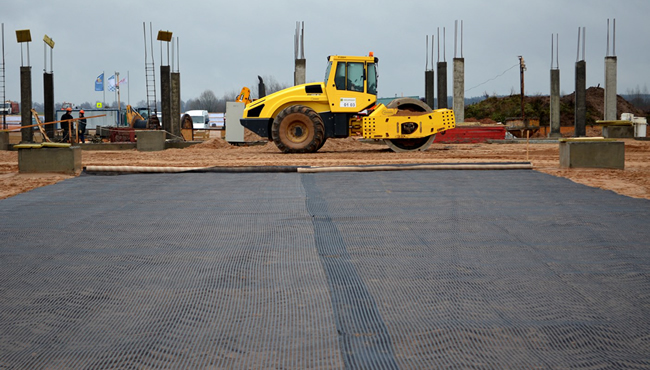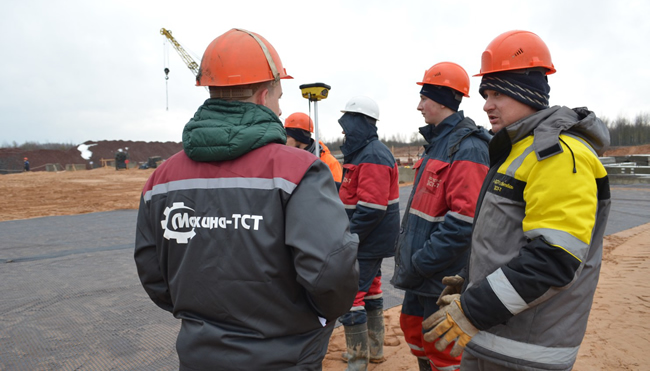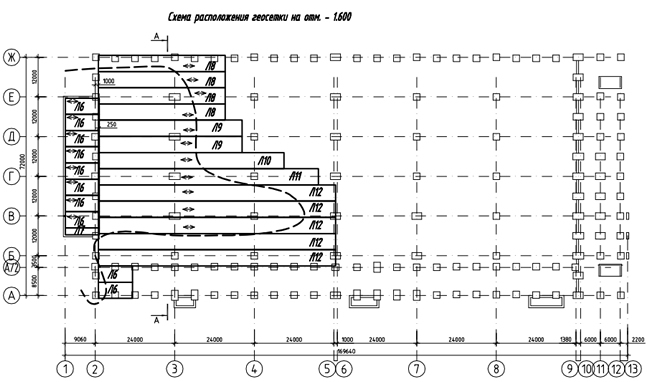In late 2017, construction began on a multimodal transportation, industrial, and logistics center in Bolbasovo, which is located in the Orsha region of Belarus. The 230-ha site will function as the linchpin in a “new silk road” between China and Europe.
The area is supported by convenient access to railways, an airport, and the intersection of major west-east and north-south Trans-European highways A12/М1/E30 and М8/E95. It’s an ideal location for a major logistics hub, but for the development to succeed and for costs to be kept in control, geosynthetic reinforcement has been needed.
LOGISTICS CENTER ON FIRM FOOTING
“The Bremino-Orsha Multimodal Industrial and Logistics Complex provides logistics infrastructure and production premises, as well as services for the companies (customs representatives, freight forwarders, banks, insurance companies and others),” writes the Bremino Group, which is leading the development of the logistics center.
The complex has drawn major interest, with the Belarusian President moving the project forth by special decree and international financing from a Poland-based bank (BGK) ensuring the project has ample credit to meet the ambitious construction timeline. The logistics operation is expected to open in 4Q 2018 and will feature 191,000 m2 of warehousing, 279,000 m2 of manufacturing space, a storage yard for 1100 TEU containers, parking for 2000 trucks, offices, showrooms, and a small hotel.

Photo by Machina-TST.
The native soils in the construction zone, however, were not found to be strong enough to support the expected loads from the complex’s frequent heavy transport, high traffic volume, and storage needs. These soils were characterized by a high volume of peat at a depth 2.5 m from the surface. The maximum thickness of the peat extended 3 m. Geosynthetic reinforcement and pile framing was specified.
These solutions enabled the site works to begin upon a strong, efficient foundation.
RELATED: Asphalt Reinforcement with Geogrid on Europe’s M1 Highway
Two geogrids from Machina-TST were selected: Stradex PET (60/60)-25 and (40/40)-25. These geosynthetic layers helped improve the weak base without requiring a complete pit-reclamation. The installation was conducted in four layers at different levels about the weak soil zones.

Photo by Machina-TST.

Drawing by Machina-TST.
Learn more about Machina-TST’s reinforcement expertise, geosynthetic manufacturing, and global markets at www.mahina-tst.com.











